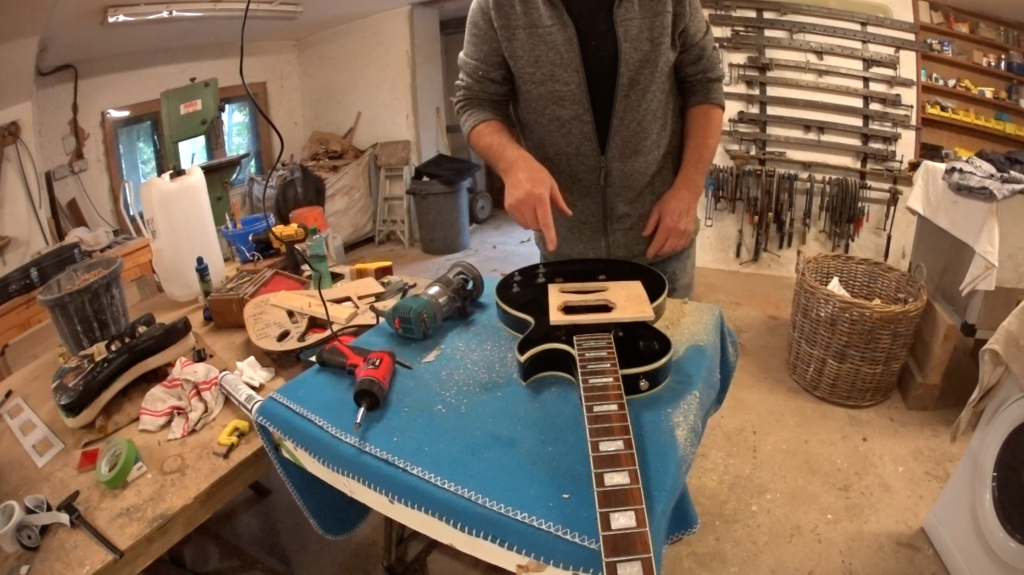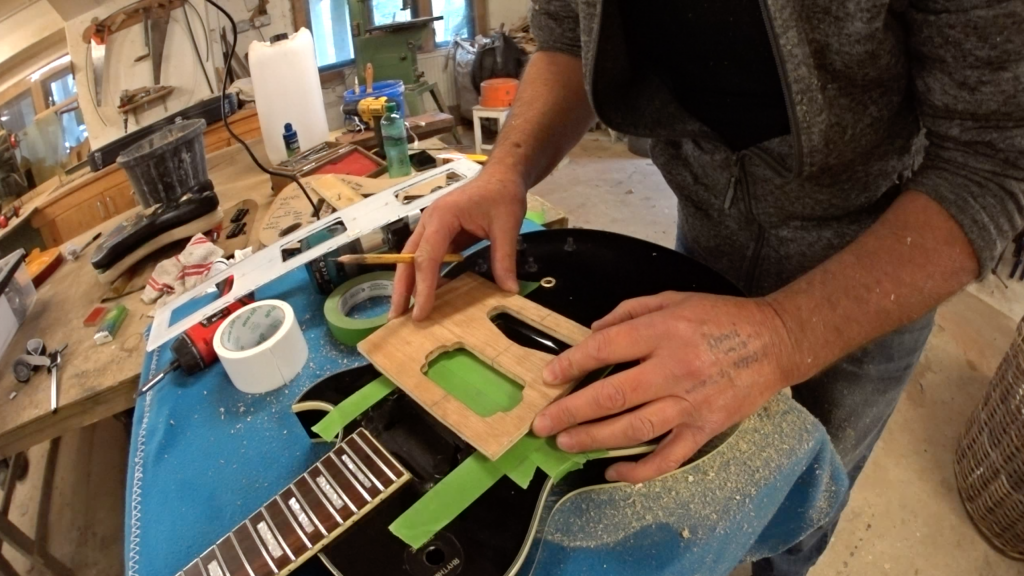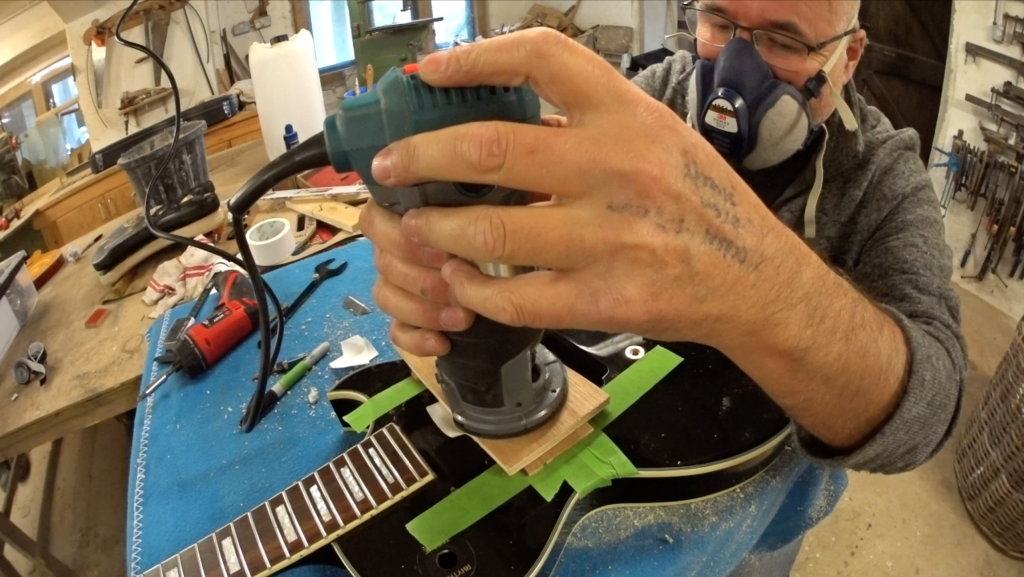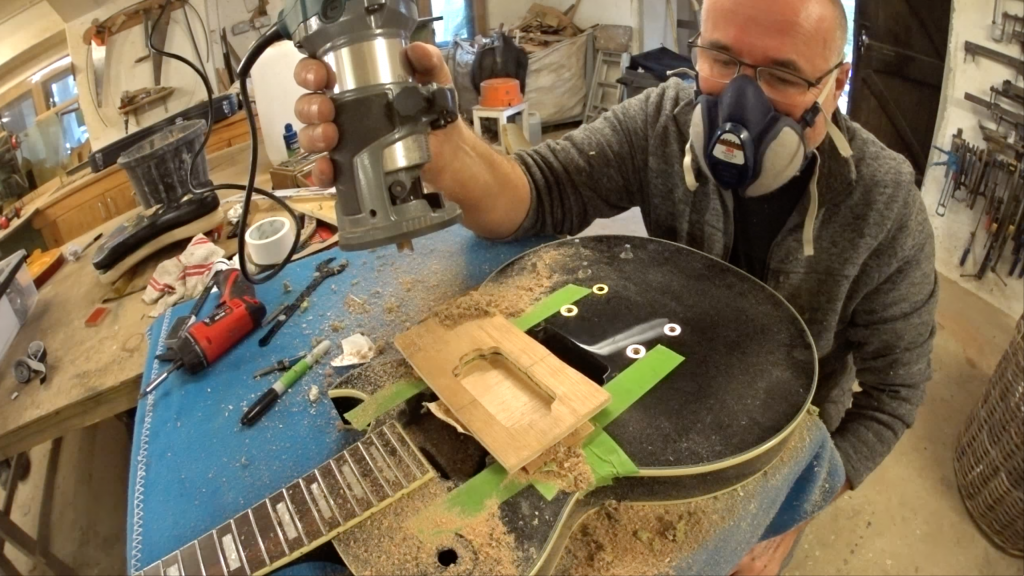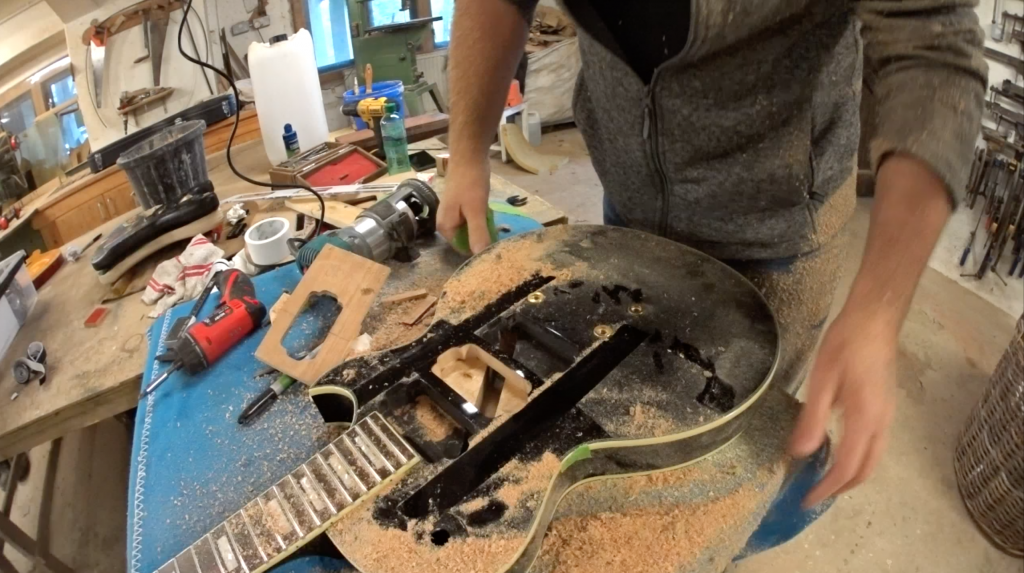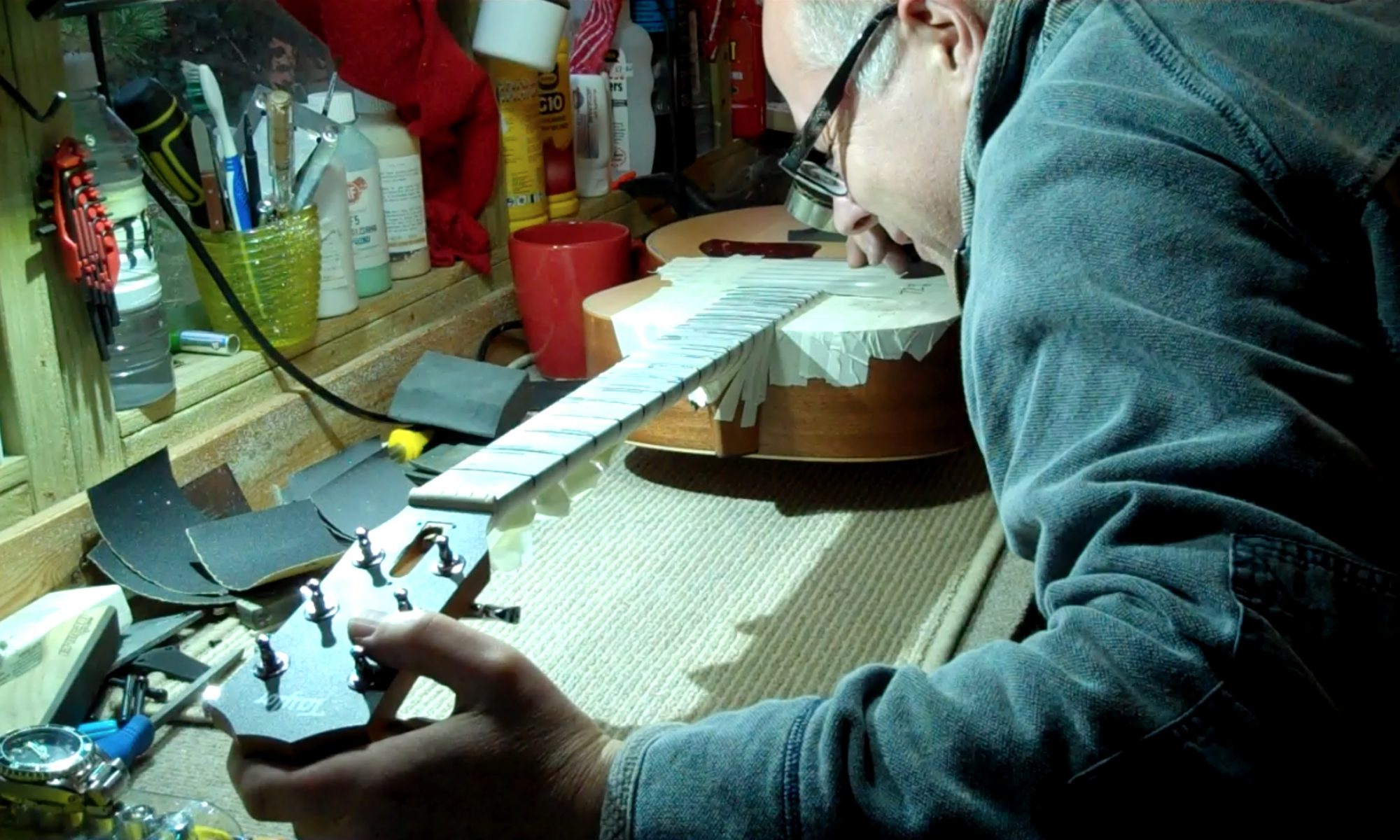Routing an extra pickup in this Rally GL400 to create a ‘Black Beauty’-style 3 pickup Les Paul copy was a technique challenge. Because of the carved top there’s nowhere flat to anchor the humbucker cavity router template. Holding the template still against the guitar body is critical to ensure a sharp and accurate cut out but normally this is done either with Duck Permanent double-sided carpet tape (amazing for holding templates) or careful screwing of the template to hidden parts of the guitar body.
I *could* have made an extended template and screwed it into the existing humbucker holes. That would have secured it against the guitar top but it would still have needed buttressing either side to prevent the template rocking. In the end, I chose to use a strip of the tape down the centre of the template and to buttress it under either overhanging side to minimise rocking.
Unless they’re screwed firmly in place with multiple screws, templates are always at risk of wandering slightly and this happens if / when the router pushes against the inner edges of the template. In this case, the risk of wandering was even higher so it was critical to assess whether it was possible to rout this without moving the template.I’ve learned in the past that the more you take (i.e. the deeper you set your router cut) the more force you’re likely to use in holding and moving the router. This is in part because of the need to restrain the router (it’s more likely to snatch and jump when dealing with deeper cuts) and the need to push it through the material. When this ‘firmness’ of grip meets the sides of a weakly-fixed template it can get messy.
So I learned to a) make more shallow passes and be prepared to take more time and b) consciously avoid pushing against the template inner edge. To achieve this, focus on removing from the inside out without touching the edge – until you’ve left only a 1mm ‘ring’ of wood between the router and the template edge. Then gently allow the router bearing to meet the template edge and follow it around but with as little pressure as possible.
In practice this worked out fine with this rout – and in reality, the template was very, very lightly fixed. Ultimately, judging whether or not the template is even fixed enough to do the job as described is a matter of experience; suffice to say it may surprise you how little force the template needs to be fixed with to do a good job. In the same way, you have to also judge whether there’s enough mass in the work-piece vs. the torque of the router you’re using to require restraining it or not. In this case, the guitar was heavy and stable so it wasn’t necessary to lock it down.
